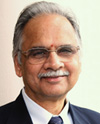Important Bioengineering Technologies of the Next Decade – Part 2
By Atam Dhawan
What are the emerging medical and healthcare technologies of the next decade? A new report provides a view of 10 areas to watch. We present part 2 of the report in this issue. Part 1 was featured in the August Newsletter.
(Editor’s note) This article is drawn from a report to the IEEE Engineering in Medicine and Biology Society’s Emerging Technology Committee.
6. Molecular and Optical Imaging Technologies
Many nonlinear optical techniques, such as multi-photon microscopy, stimulated Raman spectroscopy/microscopy, and second harmonic generation microscopy, all have demonstrated significant potential in recent years for providing exquisite morphological as well as biochemical and metabolic information at the cellular or sub-cellular resolution level. Comparing to the standard biopsy and subsequent histopathological analyses approach for disease diagnosis and staging, the optical techniques: 1) do not require tissue removal and staining, 2) can be applied in vivo and repeated over the same examination sites over time, and 3) are able to survey much larger areas of living tissue at the examination sites, thus reducing the likelihood of aspirating and examining false tissue samples – a significant problem plaguing clinical biopsy. Potential clinical applications for optical endomicroscopy is very broad, ranging from diagnosis and staging of cancer, cardiovascular diseases, other fibrotic diseases, and diseases related to collagen structure damage, etc. Successful development and clinical applications of optical endomicroscopy are faced with two main challenges. The first challenge is the development of appropriate technology platform capable of performing nonlinear optical detection endoscopically or laparoscopically. The second main challenge is the development of understanding of nonlinear optical microscopy images with respect to normal and pathophysiological processes, and the identification of specific disease markers/features from nonlinear optical microscopy images. Such disease markers/features will need to be validated by standard histopathology and clinical diagnosis.
Targeted Molecular Perturbation Imaging
This history of imaging contrast agent development corresponds with our increased capabilities in diagnosing diseases, treating diseases, and evaluating disease treatment. With research advances in molecular imaging and molecular medicine in general, our current practice of correlating diseases with observable morphological changes in gross anatomy and with apparent changes of physiological functions will be replaced by more sensitive and specific disease diagnosis and treatment. This is being achieved by our increased abilities to more directly detect diseases and correlate them with underlying biological and pathological processes at the cellular and molecular levels. A critical component for success of this molecular medicine based approach is the identification and utilization of disease specific molecular imaging/therapy targets.
Successful discovery and utilization of such molecular targets is limited by a fundamental challenge: disease processes are often sustained by the same or very similar molecular machineries and bio- or pathophysiological processes utilized by normal biology or physiology. The normal to disease state differentiation is often very small, especially at the early disease onset stage, and is often represented by some differences in the degree of utilization of the shared molecular machineries and processes, such as different levels of expression of specific enzymes or cell surface receptors. Disease targets rarely result from distinct molecular and/or cellular processes. This challenge poses limitations to diagnostic specificity, leads to non-ideal treatment efficacy, and makes reduction of treatment related adverse effects difficult to achieve.
Current molecular imaging/therapy agent research focuses on discovery and exploration of naturally existing molecular targets of diseases, and on novel approaches to best exploit differences associated with the molecular targets between normal and diseased states for the purposes of disease diagnosis and treatment Such research efforts have shown significant promises for improving diagnostic and treatment sensitivity and specificity over currently practiced conventional disease diagnosis and treatment protocols that are primarily based on detecting/monitoring changes in anatomic morphology and apparent physiological functions. However, further improvement in disease imaging/therapy sensitivity and specificity are limited by the challenges discussed above.
The purposeful perturbation aims to generate unique and specific responses from the imaging/therapy targets. The purposeful perturbation also aims to further stress-out the imaging/therapy targets, and thereby enhance the differentiation between normal and diseased states. Successful exploration and development of more biologically active imaging/therapy agents could lead to direct clinical application in diagnosis, treatment, and therapy monitoring for cardiovascular diseases, cancer, neurological diseases, and other challenging heath problems, and could potentially lead to better understanding of basic biology and diseases in basic health science research.
7. Multiscale Modeling and Analysis in Computational Biology and Medicine
Computational modeling and analysis in biology and medicine have received major attention in recent years. The interdisciplinary efforts developed so far aimed at elucidating structures and functions of living systems with major challenges in computational modeling and analysis to understand, analyze and predict the complex mechanisms of biological systems. Continued research investigations in computational biology and physiology have addressed important issues across many applications spanning from molecular dynamics, biological signaling pathways, cellular biology and communication, tissue mechanobiology, organ function and performance, systemic auto regulation, all the way up to lifestyle and environmental influences and behavioral responses. Researchers are now beginning to address the grand challenge of multi-scale computational modeling and analysis: effectively capturing biological and physiological interdependencies across multiple observational scales – not only in time and space, but also in physico-chemical modality – and doing so in a computationally efficient manner. The development of many such models involves the design of multimodal data acquisition instrumentation and systems capable of measuring and monitoring of structural and functional properties in vivo and in minimally invasive manner. Over the last few years, the research work is being extended not only to further improve the basic understanding of biological and physiological models but also to explore translational biomedical research. For example, multi-scale and multi-modal modeling approaches are now paving the way to better understanding of the mechanisms of disease and its treatment, thus helping to establish diagnostic biomarkers, physiology-based patient selection criteria, and more principled strategies for choosing, personalizing and optimizing therapeutic options. Multi-scale computational modeling promises to become a fundamental contributor to future biomedical sciences and technologies, and personalized predictive healthcare.
8. Tissue Engineering
Historically, the tissue engineering area has not been strongly represented in EMBS community as other biomedical engineering society. The biomechanics and biological related cross-disciplinary technologies would lead to complement neuro-prosthetics and neuro-rehabilitation. It is time to promote tissue engineering and related areas with emphasis on cross-disciplinary sub-areas such as tissue imaging that would contribute to point-of-care technologies, neural interfacing, and multi-scale analysis in physiome paradigm of modeling and simulation for clinical and therapeutic applications.
Vascular Imaging in Tissue Engineering
The development and adaptation of appropriate imaging technologies in tissue engineering research are critically important in ensuring continued success in tissue engineering and regenerative medicine research, and more importantly in accelerating their clinical translations. Among significant utilities of imaging in tissue engineering and regenerative medicine research, imaging provides capabilities to characterize engineered tissue constructs in vivo and non-destructively (e.g., imaging of angiogenesis in 3D tissue construct), imaging allows for tracking of stem cells, and imaging provides the capability to monitor therapy response and to detect implant failure in time for corrective actions.
At least two major challenges exist for increased utilization of imaging in tissue engineering and regenerative medicine research and clinical translation: 1) under utilization of existing imaging technologies, and 2) development of unique and appropriate imaging capabilities to address specific needs for tissue engineering research.
Many existing in vivo or in vitro imaging and microscopy methods could be easily adapted for tissue engineering research and have immediate impact (such as two photon microscopy, optical coherence tomography, etc), yet such efforts for adaption of imaging technologies in tissue engineering research have so far been very limited. This is probably attributable in part to limited interactions and collaborations between the tissue engineering and biomedical imaging research fields and among researchers in these fields. In the mean time, tissue engineering research imposes unique requirements for imaging capabilities that are non-existent or in early stages of development, for example, the ability to image and track specific molecular interactions in real time at the molecular and cellular levels.
Overall, increased development and utilization of appropriate imaging technologies in tissue engineering and regenerative medicine research will lead to accelerated tissue engineering research and translation, and will help to stimulate the research and development of the next generation imaging technologies.
9. Medical/Surgical Robotics
Biomedical and surgical robotics continues to be an exciting area with significant growth and promise to offer reliable health care technologies in therapeutic, rehabilitation and surgical applications. Biomedical robotics with theoretical and experimental challenges offers potential clinical applications and has already achieved success in specific interventional therapeutic and surgical applications. While the medical robotics can simulate a biological system from a “biomechatronic” point of view to model and simulate the scientific and engineering mechanisms for improved performance, it can offer precise and reliable access to the biological tissue and even navigate through futuristic application of smart navigation at micro and nano levels within a biological entity. The engineering design and fabrication of novel, high performance bio-inspired machines and systems are heading towards the development of novel multi-scale devices and systems with a wide spectrum of potential applications in diagnosis, therapy, surgery, prosthetics, rehabilitation, and personalized health.
10. Stem Cell Engineering and Regenerative Medicine
The advent of stem cell based therapies and cellular engineered approaches have brought regenerative medicine into an increased focus as a part of the modern medicine practice, with a potential to treat a myriad of intractable diseases in the future. Stem cells reside in a complex microenvironment consisting of a combination of precise cues that are biochemical, physical, and mechanical in nature. Therefore, it will be highly important to use engineering tools to recreate the complex in-vivo environment of stem cells, including microfluidics, micropatterning and substratum engineering. As this area is evolving fast with promising future technologies, there are significant gaps among development stages from cellular to organ levels. A complete spectrum of research from basic and applied sciences to clinical engineering would be strongly required to meet the expectations. This includes international collaborations and benchmarking.
Acknowledgements
I would like to acknowledge and thank the EMBS Emerging Technology Committee members for their contributions. The committee is:
Atam P Dhawan, NJIT, USA: Chair
Jean Louis Coatrieux, Universite de Rennes , France
Alexander Frangi, University of Sheffield, UK
Peter Hunter, University of Auckland, New Zealand
Silvestro Micera, University of Zurich, Swtizerland
Kenji Sunagawa, Kyushu University, Japan
Bruce Wheeler, University of Florida, USA
Metin Akay, University of Houston, USA
Semahat Demir, National Science Foundation, USA
Yantian Zhang, National Institutes of Health, USA







 Thomas Schmitz-Rode is Chairman, Applied Medical Engineering at RWTH Aachen University. He received a Dipl.-Ing. degree in Mechanical Engineering from RWTH Aachen University in 1982.
Thomas Schmitz-Rode is Chairman, Applied Medical Engineering at RWTH Aachen University. He received a Dipl.-Ing. degree in Mechanical Engineering from RWTH Aachen University in 1982.  Atam P. Dhawan, Ph.D., obtained his bachelor's and master's degrees from the Indian Institute of Technology, Roorkee, and Ph.D. from the University of Manitoba, in Electrical Engineering.
Atam P. Dhawan, Ph.D., obtained his bachelor's and master's degrees from the Indian Institute of Technology, Roorkee, and Ph.D. from the University of Manitoba, in Electrical Engineering.  Mathukumalli Vidyasagar received B.S., M.S. and Ph.D. degrees in electrical engineering from the University of Wisconsin in Madison, in 1965, 1967 and 1969 respectively.
Mathukumalli Vidyasagar received B.S., M.S. and Ph.D. degrees in electrical engineering from the University of Wisconsin in Madison, in 1965, 1967 and 1969 respectively.